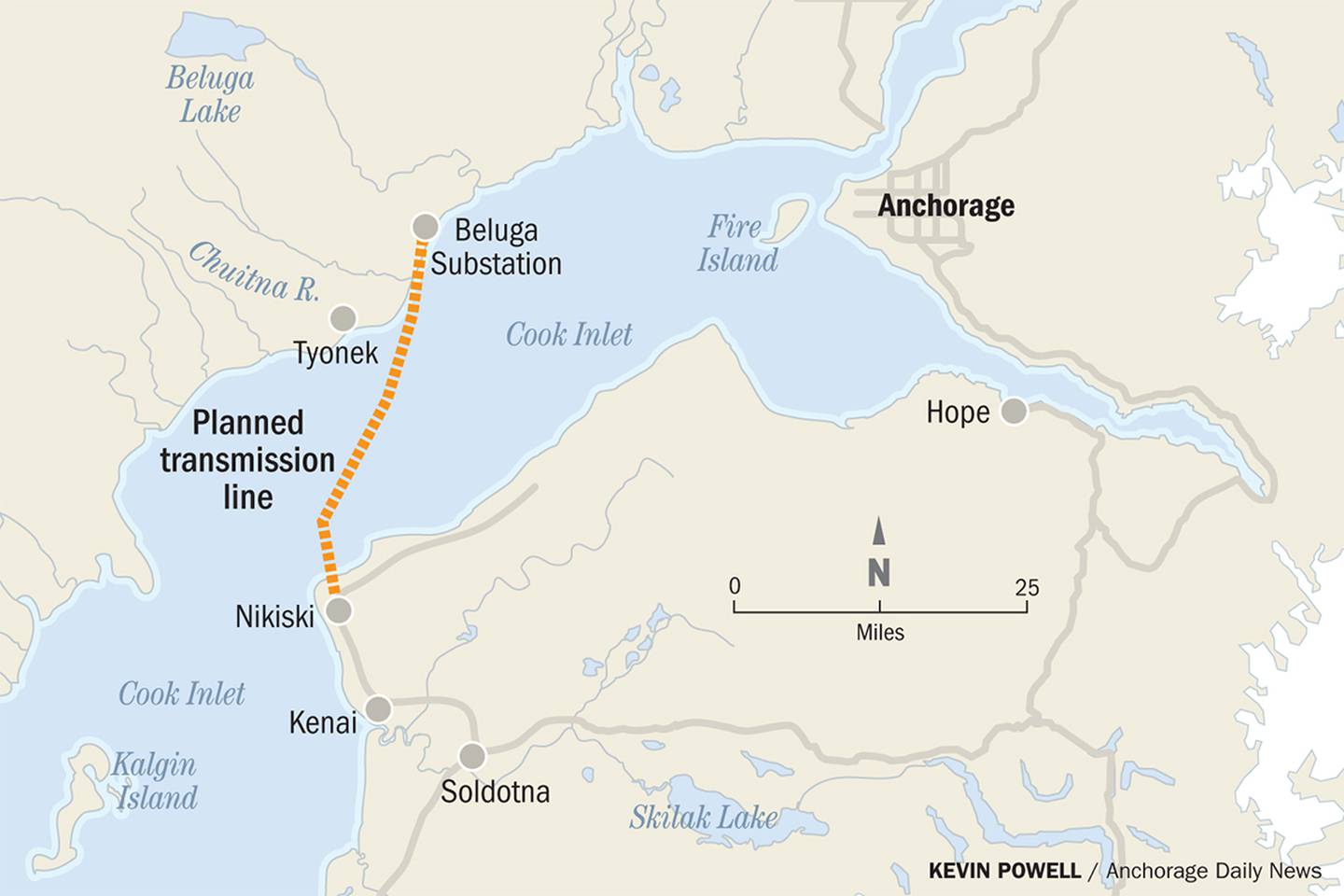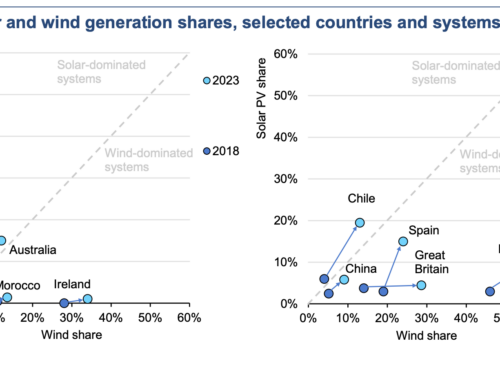$200M federal grant boosts major project to upgrade Railbelt electric grid, allowing more renewables
September 21, 2024

An Alaska energy agency has accepted a massive federal grant to build a power line across Cook Inlet that, once built, will allow more renewable energy to be distributed from the Kenai Peninsula into the Railbelt grid.
The board of the Alaska Energy Authority this week voted to accept a $206.5 million grant from the Department of Energy to pay for the project. The authority must find matching funding to support the grant.
The $413 million in total funds will pay for construction of a 38-mile submarine cable across Cook Inlet from roughly Nikiski to Beluga, said Curtis Thayer, executive director of the Alaska Energy Authority.
The transmission line will provide redundancy to the existing power lines that run along overhead towers, he said. It will increase the transmission capacity by four times, he said.
That will allow more power to be transmitted into the grid from the Bradley Lake Hydroelectric Project near Homer, as well as future renewable projects on the Kenai Peninsula.
The transmission line must be completed within eight years, he said.
It is likely the largest construction project proposed in Alaska outside the multibillion-dollar oil fields under construction on the North Slope, he said.
ADVERTISEMENT

The federal grant is part of the bipartisan infrastructure bill passed by Congress in 2021 and signed into law by President Joe Biden.
The energy authority has eight years to secure funding, he said.
In an initial step, close to $33 million in matching funding has been identified, Thayer said. The agency and electric utilities have pledged $20 million of bonding authority, and the state has provided $12.7 million, he said.
Additional funding is being pursued and conversations on the topic have been underway with the Legislature and utilities, he said.
The grant to Alaska was the fifth-largest of its kind, out of 700 applications nationally, he said.
“We all realize that we need these upgrades,” he said. “With the feds paying half of the amount, it makes a huge difference.”
The line will have many benefits once it’s built, said Chris Rose, executive director of Renewable Energy Alaska Project. As part of the effort, the Legislature should ensure that electric utilities from Homer to Fairbanks employ a unified operating system to dispatch energy as efficiently as possible along the entire Railbelt, he said.
The high-voltage direct current transmission line will allow more renewable energy from the Bradley Lake project to be distributed into the Railbelt system, Thayer said.
The Bradley Lake project already provides 10% of the power on the Railbelt from the Kenai Peninsula to Fairbanks, he said. It is the cheapest electricity on the grid.
But the existing lines have relatively limited transmission capacity, constraining the power that can be shipped from Bradley Lake, he said.
The planned transmission line will also support future renewable energy projects on the Kenai Peninsula, such as a large solar project proposed for construction.
“If you look at Bradley, and you look at solar and even wind, it allows us more opportunities,” Thayer said of the project. “Because right now we cannot we cannot move any more power on those transmission lines, north to Southcentral Alaska or Fairbanks, because we’re limited by the size, even though right now the hydro facility can produce more power.”
Search
RECENT PRESS RELEASES
Related Post



